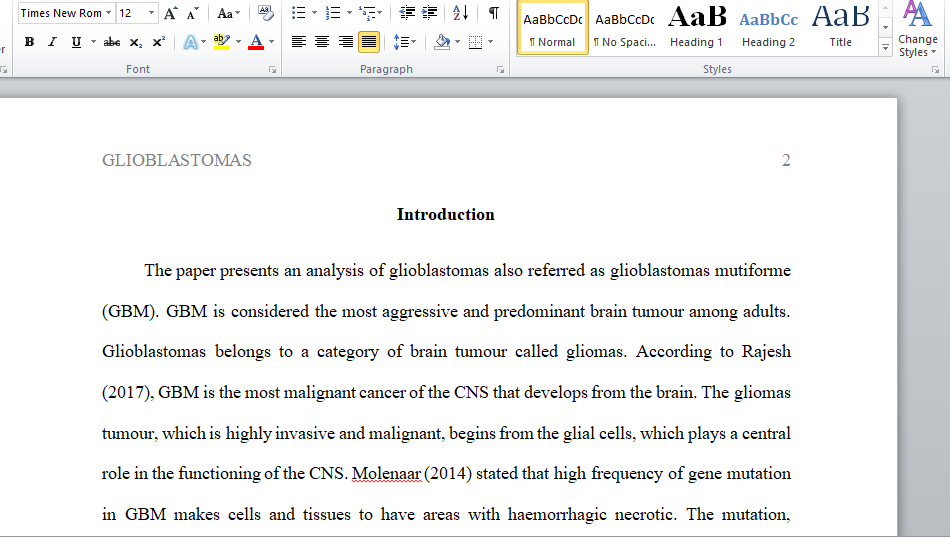Write the Analysis of Glioblastomas
Write the Analysis of Glioblastomas.You are a molecular scientist working in association with a resident (training) oncologist to perform precision medicine. A patient was diagnosed with glioblastoma in the brain. The oncologist needs advice to choose appropriate diagnostic methods based on molecular technologies with the potential to inform about prognostic and treatment choices.
Your task is to write a literature review to provide current and accurate information to support a diagnostic/treatment strategy.
This literature review will take time and effort. You will need approximately 30 references and at least 75% of your references need to be from current (the last 6 years) international, peer-reviewed journals. Please do NOT use direct quotes and/or reference textbooks or websites.
Your literature review should be divided into sections:
– Title: it should be original and specific, informing the main focus of your chosen review.
– Introduction: background information that supports your topic choice and provides a clear and concise plan of what is going to be discussed in the following section. It should be finalized with an aim(s) statement. This section should be fully referenced and have approximately 300 words (10% of word count)
– Main body text: this section may be divided into subheadings, where you should summarize, discuss and critically analyses relevant literature findings that inform your decision-making rationale. This section should be fully referenced.
Suggested topics list that you may use as a guide for the structure of this section:
- The pathogenesis of glioblastoma contrasted with the normal functioning of the cells/tissue involved (approximately 10% of word count)
- Characterization of glioblastoma genetics: distinguish between various classes of glioblastoma at a molecular level (approximately 15 % of word count)
- Prognosis (approximately 5 % of word count)
- Conventional treatment of glioblastoma (approximately 10% of word count)
- Molecular method(s) either used or researched (start with already used methods) that will aid in the diagnosis of this cancer molecular subtypes, prognostication or treatment choice (approximately 40% of word count). Make sure that you critically discuss benefits and limitations of this or these method(s).
– Conclusion: finalize your review by providing a conclusion based on the findings discussed. This section should mostly bring your own reflections; therefore you may not need to use references (approximately 10% of word count).
Answer preview:

Words:2990
